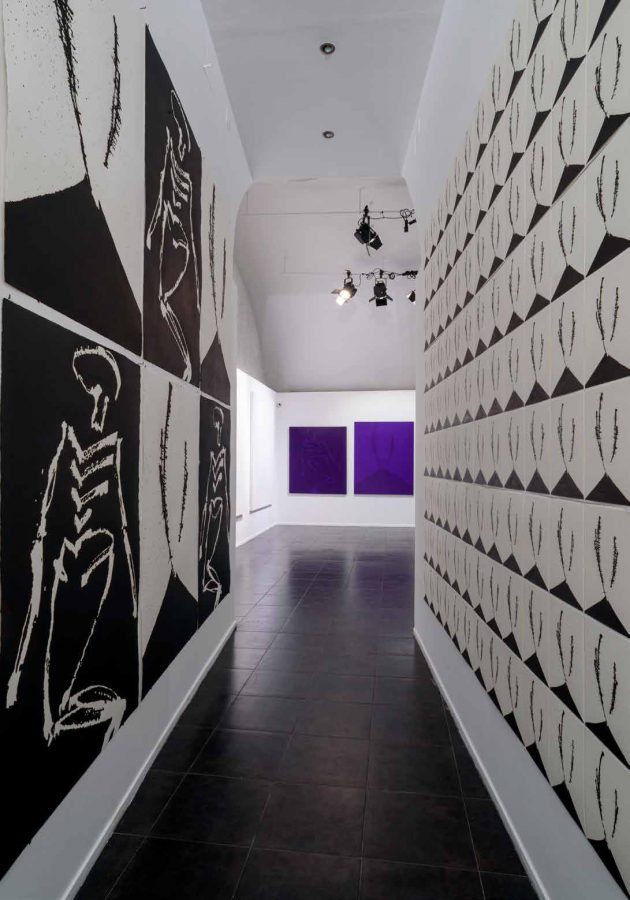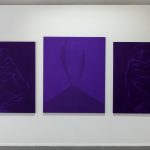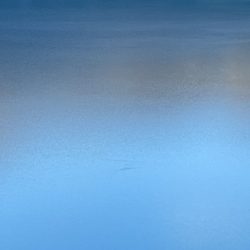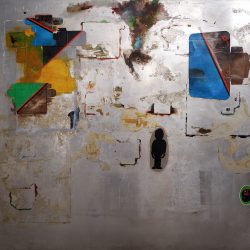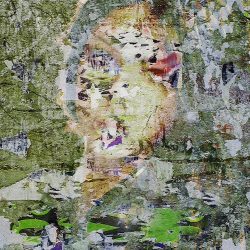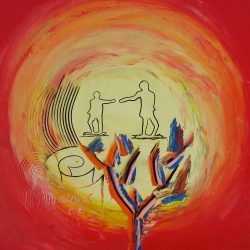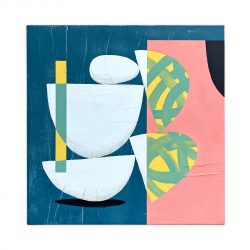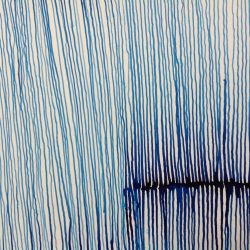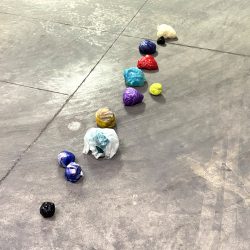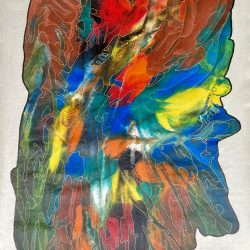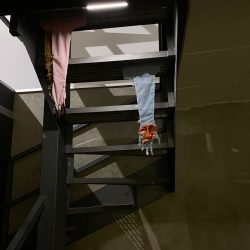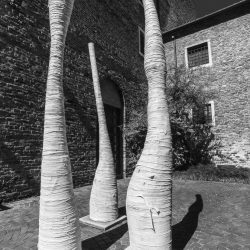work
erector vesevo
| category | Painting |
| subject | Abstract |
| tags | leduc, gallery, astratto, vesevo |
| base | 130 cm |
| height | 150 cm |
| depth | 3 cm |
| year | 2019 |
Strive for nothingness
New equations in physics show that
there is no such a thing as a void space:
the void does not at all equal to being
empty, and nothingness does not at all
equal to being nothing. Nothingness is
a combination of matter and antimatter
– of particles and antiparticles – that
disintegrate one another: billions
of billions of particles appear and
disappear in a millionth of an instant.
The void is an infinite disorientation,
a stirring force full of energy of which
however we are unable to make any
recognition, believing this to be the true
nature of nothingness.
Pierre-Yves Le Duc’s production tends
towards nothingness – towards the void
– in two ways: by repeating the sign and
by effacing it.
The first strategy leads to obliterating
the emotional component of the work of
art: each repetition filters one portion of
the previous sign and paves the way for
the next one which is increasingly nonexistent.
The second strategy, that of
effacement – black on black, white on
white – takes matter and image away
from the eye of the beholder: it cancels,
or rather conceals, reality.
Both strategies yield nothingness: a
nothingness that is full (full of different
repetitions, or of hidden parts), a
nothingness that is stirred by energy,
by matter and antimatter, by black
and white, by life and death. We too
– for we too are composed of void
and nothingness – vibrate and feel
disoriented in the presence of Pierre-
Yves’ artwork.
Diego Lama
3 acrylic on canvas
(180x220 cm)
2 mixed media
with silk veil
(130x150 cm)
1 mixed media
with silk veil
(130x160 cm)
16 oil on paper Canson
Arches acquarello 640 gr
(105x155 cm)
198 ink on paper
acquarello Fabriano
(23x30,5 cm)
New equations in physics show that
there is no such a thing as a void space:
the void does not at all equal to being
empty, and nothingness does not at all
equal to being nothing. Nothingness is
a combination of matter and antimatter
– of particles and antiparticles – that
disintegrate one another: billions
of billions of particles appear and
disappear in a millionth of an instant.
The void is an infinite disorientation,
a stirring force full of energy of which
however we are unable to make any
recognition, believing this to be the true
nature of nothingness.
Pierre-Yves Le Duc’s production tends
towards nothingness – towards the void
– in two ways: by repeating the sign and
by effacing it.
The first strategy leads to obliterating
the emotional component of the work of
art: each repetition filters one portion of
the previous sign and paves the way for
the next one which is increasingly nonexistent.
The second strategy, that of
effacement – black on black, white on
white – takes matter and image away
from the eye of the beholder: it cancels,
or rather conceals, reality.
Both strategies yield nothingness: a
nothingness that is full (full of different
repetitions, or of hidden parts), a
nothingness that is stirred by energy,
by matter and antimatter, by black
and white, by life and death. We too
– for we too are composed of void
and nothingness – vibrate and feel
disoriented in the presence of Pierre-
Yves’ artwork.
Diego Lama
3 acrylic on canvas
(180x220 cm)
2 mixed media
with silk veil
(130x150 cm)
1 mixed media
with silk veil
(130x160 cm)
16 oil on paper Canson
Arches acquarello 640 gr
(105x155 cm)
198 ink on paper
acquarello Fabriano
(23x30,5 cm)



